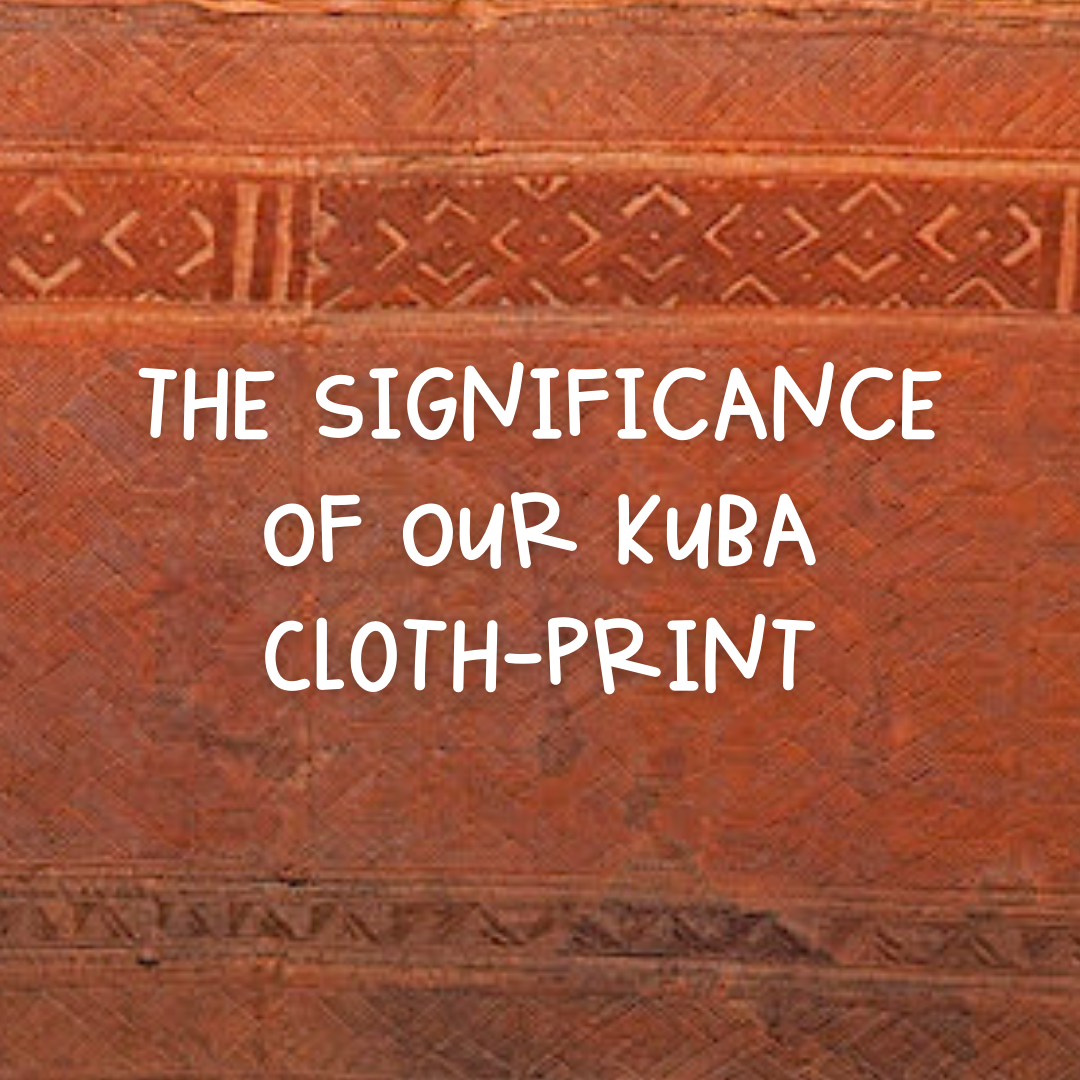
Share this Article

The Kuba king presides over a dance in his palace, Democratic Republic of the Congo. Photo by Angelo Turconi
The Kuba Cloth Bag Collection stems from our love of African textiles. We interpreted this Central African fabric as a pattern, which we then hand screen-print onto natural canvas in various colors.
In developing the print, we researched the rich history of the Kuba Kingdom, its people, and the cultural significance of the Kuba cloth. Here is some of what we learned (see source material and further information at end).

The Kuba Kingdom
Also known as the Kingdom of the Bakuba or Bushongo, it is a traditional kingdom in Central Africa. The original Kuba migrated during the 16th century from the north of Africa.

Kuba artist, Democratic Republic of the Congo. Photo by Angelo Turconi
The Kuba Kingdom flourished between the 17th and 19th centuries in the region bordered by the Sankuru, Lulua, and Kasai rivers in the heart of the modern-day Democratic Republic of the Congo.
Nineteen different ethnic groups are included in the Kingdom, which still exists and is presided over by the King. The current reigning monarch, Kot-a-Mbweeky III, has been on the throne since 1968.


TOP: Women dance in the royal court, Kuba artist, Democratic Republic of the Congo. Photograph by Angelo Turconi BOTTOM: Ceremonial presentation of the muyum to the council, Kuba artist, Democratic Republic of the Congo. Photograph by Angelo Turconi
The Kuba are renowned for their raffia embroidered textiles, fiber, beaded hats, carved palm wine cups, and cosmetic boxes. They are most known for their monumental helmet masks, featuring exquisite geometric patterns, stunning fabrics, seeds, beads, and shells.
Kuba Textiles
Kuba textiles sit apart from their regional counterparts because of the intricate complexity of design and surface decoration. Most textiles are variations on rectangular or square pieces of woven palm leaf fiber-enhanced by geometric designs executed in linear embroidery and other stitches, cut to form pile surfaces resembling velvet.





Men’s status cloths from the early 20th century. Made by Shoowa people. Image courtesy of The Textile Museum and The George Washington University Museum
In Kuba culture, men are responsible for raffia palm cultivation and the weaving of raffia cloth. While women are responsible for transforming raffia cloth into various forms of textiles, including ceremonial skirts, tribute cloths, headdresses, and basketry.
Most prestige Kuba cloths are dyed with twool, a deep red substance obtained from the heartwood of the tropical trees Pterocarpus sp. and Baphia pubescens. The Kuba believe that twool is imbued with magical and protective properties. When mixed with palm oil, it creates a pomade that is applied to the face, hair, and body in a ritual context.

Women’s ceremonial overskirt from the 20th century. Made by the Bushong people. Image courtesy of The Textile Museum and The George Washington University Museum
Early 20th Century ethnographer Emil Torday acquired the oldest group of extant textiles from the Kuba tradition from the reigning King Kot aPe. He called these textiles "Bambala" after the ruling clan.
Mathematician Donald Crowe has analyzed, in particular, the two-dimensional designs of Benin, Yoruba, and Kuba arts and has shown the extent of the tribe’s explorations into the formal possibilities of geometric variation. The Kuba have developed almost all geometric possibilities for repetitive variations of border patterns. Of the seventeen ways a design can be repetitively varied on a surface, the Kuba have exploited twelve. This exploration does not mean that the Kuba confine themselves to repetitive patterning, only that they excel at it.


TOP: Shoowa cloth, closeup of plush velvet cut-pile Bottom: Byrtta Getty Images
Because of the rich and diverse history of Kuba cloths, which spans several centuries and various ethnic groups, there are numerous meanings to be found in the vast world of Kuba tapestry-making. For a time, for example, simpler flatweaves were used as currency at the apex of the Kuba kingdom. Other designs were named after the weaver who created them or the person who commissioned them. Some designs were passed down as family heirlooms. An exquisite and accomplished Kuba cloth can be directly linked to hierarchy and reinforcing political authority — the dramatic impact of its design is key to visually cementing that dominance.
All in all, there are over 200 types of traditional patterns (permutations of hexagons, rectangles, squares, chess, triangles, and other compositions) that are handed down from generation to generation.

Kuba Fabric of an Empire at The Baltimore Museum Of Art
There are four key contributing factors in determining what a piece finally ends up looking like: – The era it was made in
– The purpose it was designed for
– The availability of raw materials
– The level of human skill and expertise
Handwoven Kuba cloths are still widely available and used for wall hangings, table runners, and upholstery. Because of the craftsmanship intrinsic to the process, there's a sizable market of vintage Kuba cloths to be found for a range of prices.

Fabrics made of cloth fashioned from raffia palm, with embroidery and a garment’s central panel, top. The Metropolitan Museum of Art
These days, you find Kuba-inspired designs on everything from African print clothing, pillows and other interiors, tribal print purses and our fave recent discovery, crossbody bags for women. We recently picked up a couple of cute crossbody bags with Kuba print and cowrie shell adornments at an African market in Nairobi, Kenya's capital city.
How is Kuba Cloth Made?


TOP: Kuba women decorating woven cloth in the Democratic Republic of the Congo, photographed in 1970. Eliot Elisofon_Smithsonian Institution, National Museum of African Art BOTTOM: A Bakuba woman embroidering a Kuba textile
Kuba cloth is borne of a time-intensive process involving multiple craftspeople. First, the raffia fibers are stripped and kneaded for an initial softening. The strands are then colored using twool and other vegetable dyes, creating the shades of ivory, brown, clay red, and indigo blue that are associated with many arts of the Kuba kingdom. A flatweave textile is then produced on an inclined heddle loom, usually by male weavers. The material is coarse when it is first cut from the loom, so it is then pounded in a mortar, which softens it and renders it ready for the application of surface decoration. At this point, another round of dyeing or kneading may occur before handing the piece off for "finishing." These decorative techniques can include embroidery, appliqués, or patchwork. In the cut-pile embroidery technique, short raffia strands are individually inserted with a needle under one or more warps or wefts of a plain-woven raffia panel, then cut close to the surface at each end to produce the raised velvet-type "pile."

Weaving kuba cloth from raffia on 45 degree loom
A single placemat-sized Kuba cloth can take several days to complete. Often, many articles are joined together for larger prestige pieces, which were historically used to denote the wealth and supremacy of Kuba rulers.
Source Material & Further Reading:
A Great African Kingdom Tells Its History In Fabulous Royal Clothes
Discover the Pattern, Rhythm, and Texture of African Textiles
Kuba Cloth – Contemporary African Art
Out Of Africa, Kuba Fabrics That Dazzle And Teach
